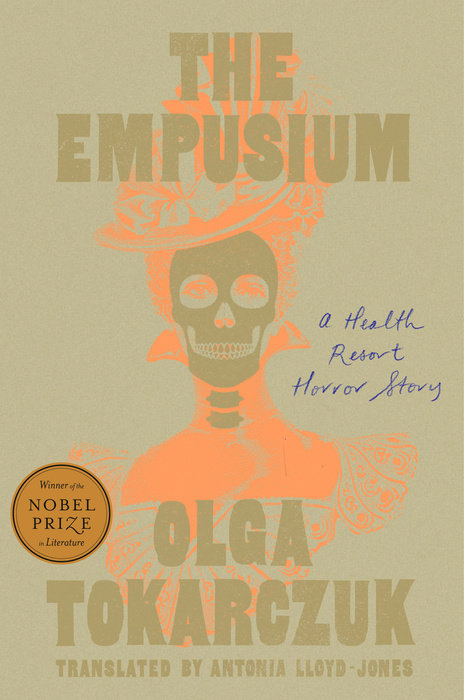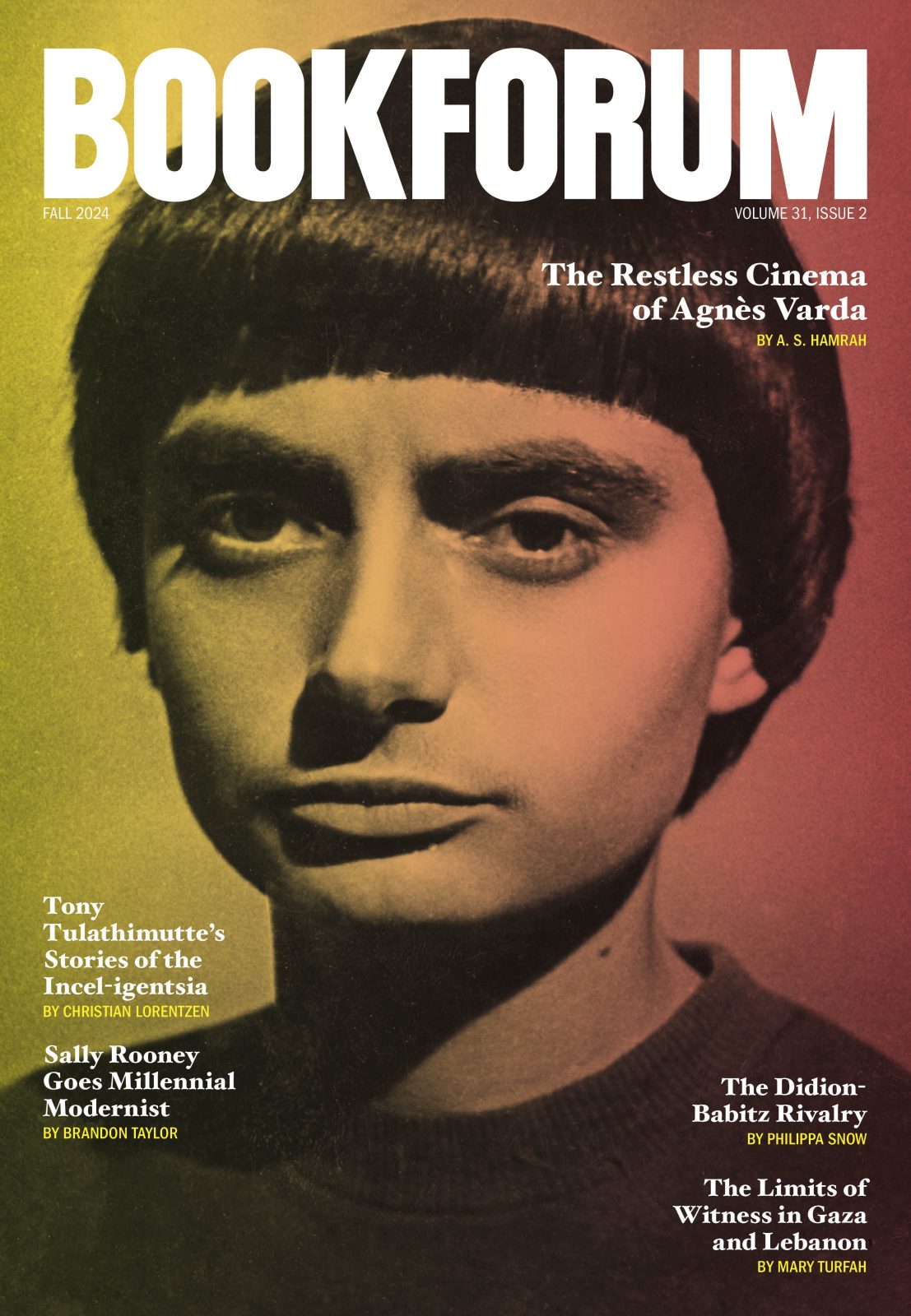
A YOUNG POLE WITH LUNG DISEASE arrives in the Silesian village of Görbersdorf in a mountain valley known for its good air and tuberculosis sanatorium. The year is 1913, and people are talking about the theft of the Mona Lisa from the Louvre and political tensions in the Balkans. He checks into a room in a boardinghouse for gentlemen and is soon integrated into the loose community formed there by fellow patients, all cooling their heels as they wait for a room to come open in the big Kurhaus, or for a doctor to declare them cured, or for death. These men are mostly older Central Europeans who like to debate philosophical questions as they sit around in the evenings sipping Schwärmerei, the potent local digestif. Although their endless pontificating can get tedious, protagonist Mieczysław Wojnicz prefers their company to that of the clique of Polish consumptives who try to attach themselves to him, requiring evasive maneuvers. His favorite fellow patient is an aspiring art historian around his own age, Thilo by name, who is gravely ill and apparently dying. Wojnicz hangs out in Thilo’s room listening to him talk about art and admiring a mysterious painting Thilo has swiped from his aristocratic parents’ home in Berlin. But most of Wojnicz’s time is spent on the business of being ill: going for examinations at the Kurhaus, loading up on the prescribed heavy meals, taking the obligatory rest cures and restorative strolls, and submitting to cold-shower treatments he loathes.
On first glance, Olga Tokarczuk’s new novel, The Empusium—her first since she won the Nobel Prize in 2018—might appear to be a fairly straightforward reimagining of Thomas Mann’s monumental The Magic Mountain, published in 1924. (Mann also won the Nobel Prize, in 1929, though the citation explicitly praises him as the author of the 1901 novel Buddenbrooks, suggesting The Magic Mountain was not to the Swedish jury’s taste.) Tokarczuk relocates the story from the Swiss Alps to Silesia, but replicates key features of Mann’s novel, with many of his motifs juggled, reconfigured, or riffed on. Like Mann’s protagonist, Hans Castorp, young Wojnicz is studying to be an engineer. The endlessly debating older gentlemen Wojnicz consorts with strongly recall Mann’s dueling philosophers Naphta and Settembrini, and a number of Tokarczuk’s minor figures are assigned props and wardrobe items from Mann’s fictional universe. She includes a nostalgic flashback scene of adolescent sexual longing (complete with symbolic pencil case), and lovingly parodies some of Mann’s narrative proclivities, such as writing extended passages of indirect discourse, and introducing characters via weirdly long lists of idiosyncratic physical features. There are inside jokes aplenty, as when she assigns the name Lukas to a character based on a figure in Mann’s novel inspired by philosopher and critic György Lukács.
Tokarczuk’s main setting, though, is not a grand sanatorium, as in The Magic Mountain, but a stuffy boardinghouse filled with mysterious attic rooms, and Wojnicz arrives as a patient, not a visitor. And while the queer eroticism of Mann’s novel is mostly relegated to blurry-edged flashbacks, Tokarczuk places it front and center in the present tense.
Tokarczuk’s book is subtitled A Health Resort Horror Story, so it’s no surprise that people start dying early on—and not of tuberculosis. The first to go is the wife of the boardinghouse proprietor—a woman whose existence Wojnicz had barely noticed (she’s described as a shoe, an apron, a tray of food). But it soon emerges that a female resident’s death is an anomaly here; this mountain valley has long been plagued by a relentless scourge of gruesome murders, all involving men. On a visit to the village cemetery, Wojnicz is startled to discover these victims always die in November, a month rapidly approaching. “It’s the landscape that’s the murderer,” Thilo announces. By the time one of the secondary characters outs himself as an undercover cop on the killer’s trail, it’s clear the book is at least partly a murder mystery, a genre Tokarczuk explored in an earlier novel, Drive Your Plow Over the Bones of the Dead.
Like Drive Your Plow, which invites us to imagine the animals of a Polish forest fighting back against the humans who hunt them for sport and destroy their environment for profit, The Empusium is deeply concerned with the natural disaster that is the Anthropocene. But Tokarczuk goes farther here, identifying that harm as specifically masculine and suggesting that Mother Earth might muster some surprising forms of resistance. The woods surrounding Görbersdorf are the scene of curious goings-on worthy of a Shakespeare play, combining the workaday (charcoal-manufacturing operations) with the occasional suggestion of supernatural forces. According to local legend, women accused of witchcraft once fled to these woods, living in the telluric “wind holes” that the boardinghouse residents take a field trip to see. The woods also contain female effigies, larger-than-life “Tuntschi” figures built out of sticks and moss, purportedly made by charcoal burners for sexual purposes. These stories of persecuted women and objects representing male sexual aggression overlap unsettlingly with Wojnicz’s own memories of being tormented as a child whose “difference”—one we are invited to believe has to do with gender and its expression—was distressingly apparent to his schoolmates.

The older male “philosophers” in this novel have a great deal to say about the shortcomings of womankind. Whether gleefully reporting that in the Middle Ages not everyone believed that women had souls, or floating the notion that “a woman’s body belongs not only to her, but to mankind,” or that mothers inevitably cause illness in their sons, they express a very large number of utterly hair-raising opinions. And Tokarczuk’s Author’s Note offers a long list of the male writers she has stealthily quoted in these dialogues—dozens of them, from Hesiod to Schopenhauer to Burroughs (with Shakespeare, Nietzsche, and Freud in between). All this quoting, by the way, is squarely in the tradition of Thomas Mann, who borrowed both ideas and phrases from the work of philosophers, scientists, and scholars. In Mann, these borrowings fuel the characters’ extensive debates; in The Empusium, the citations cumulatively produce a robust atmosphere of toxic masculinity.
As for Wojnicz: as far as he’s concerned, masculinity—which he’s having a hard time getting the hang of—means “learning to ignore whatever causes trouble” and choking down all sorts of repulsive manly foods, such as duck-blood soup, or a stew containing the blood-suffused hearts of rabbits that have been intentionally frightened to death. In the end, he pukes it all back up.
The Empusium is ultimately a fiercely feminist work, one that skewers the destructive male principle exemplified by the casual sexism and vicious cruelty of many of the novel’s characters. The book also specifically calls out and decries various forms of gender-based discrimination and violence. To delve into all the ways in which LGBTQIA+ identities factor into this novel would bring us deep into spoiler territory, given the extent to which gender identity informs the plot. Suffice it to say that the novel’s politics are very much in keeping with an open letter Tokarczuk signed in 2020, along with seventy-four other international celebrities, asking European Union Commission President Ursula von der Leyen to intervene to protect “core European values” in Poland after a particularly brutal mass arrest of queer activists. Tokarczuk has faced harsh criticism in her native country because of her activism, including being accused of “promoting eco-terrorism” and being “anti-Polish” in her views on abortion rights and gender equality.
Tokarczuk pushes back against the patriarchal monumentality of The Magic Mountain by slyly eviscerating that book’s narrative perspective, which is clearly positioned as masculine despite hiding behind irony and the royal “we.” While Mann’s narrator swans around as an avuncular commentator, weighing in just often enough to let the reader feel he’s in good hands, Tokarczuk’s emphatically plural narrators are creepy harpies who like to make their presence felt. In the first chapter alone, their interventions range from relatively discreet (“we must look beneath [these clouds of steam]”) to weirdly conspicuous (“We find this movement fascinating. We like it”) to downright intrusive (“We are drawn to the cracks between the floorboards—and there we disappear”). And while the reader may forget about their presence for dozens of pages at a time, these narrators and their “ultra-vision” stick by us, making sure we understand—as we will, chillingly, by book’s end—what it means that they have been there all along, spying. They shift shapes like the “Empusa” referenced in the novel’s title: a mysterious man-eating female demon or spirit in Greek mythology, associated with the goddess Hecate. And in the end they invite us to share a powerful but also playful vision of a natural environment controlled by female forces.
Tokarczuk’s bewitching narrative voice in this novel—by turns threatening and cajoling, and invariably odd—is brilliantly captured in the muscular English of translator Antonia Lloyd-Jones, who also gave us Drive Your Plow Over the Bones of the Dead and two other previous Tokarczuk novels. Lloyd-Jones is always up for some hilarious deadpan, as when the narrators remark, before launching into a complex description of Wojnicz’s newly acquired footwear, “We like inspecting boots.” Lloyd-Jones also provides passages of serene lyricism: “Just ahead of them, a sudden gust of wind twisted a small heap of leaves into a tiny whirlwind, a whirl-breeze, barely a whirl-puff.” In a book constantly shifting between the language of violent masculine opinion and forms of resistance to it, the translator’s ability to produce the required shifts in tone is key.
By the end, pretty much everyone and everything we’ve encountered has been revealed to be other than they first appeared, making The Empusium very much a novel about vision and learning how to see. Under fever-racked Thilo’s instruction, Wojnicz studies the art of “transparent looking” that “goes beyond the detail . . . to the foundations of the view in question, to the basic idea.” Wojnicz proves a most adept pupil. And Tokarczuk’s erudite, subversive, and delightfully zany novel challenges us, too, to look hard at what’s being said and done around us, especially things we might prefer not to have to witness.
Susan Bernofsky is the author of Clairvoyant of the Small: The Life of Robert Walser (Yale University Press, 2021). She is currently translating Thomas Mann’s The Magic Mountain for W. W. Norton.
